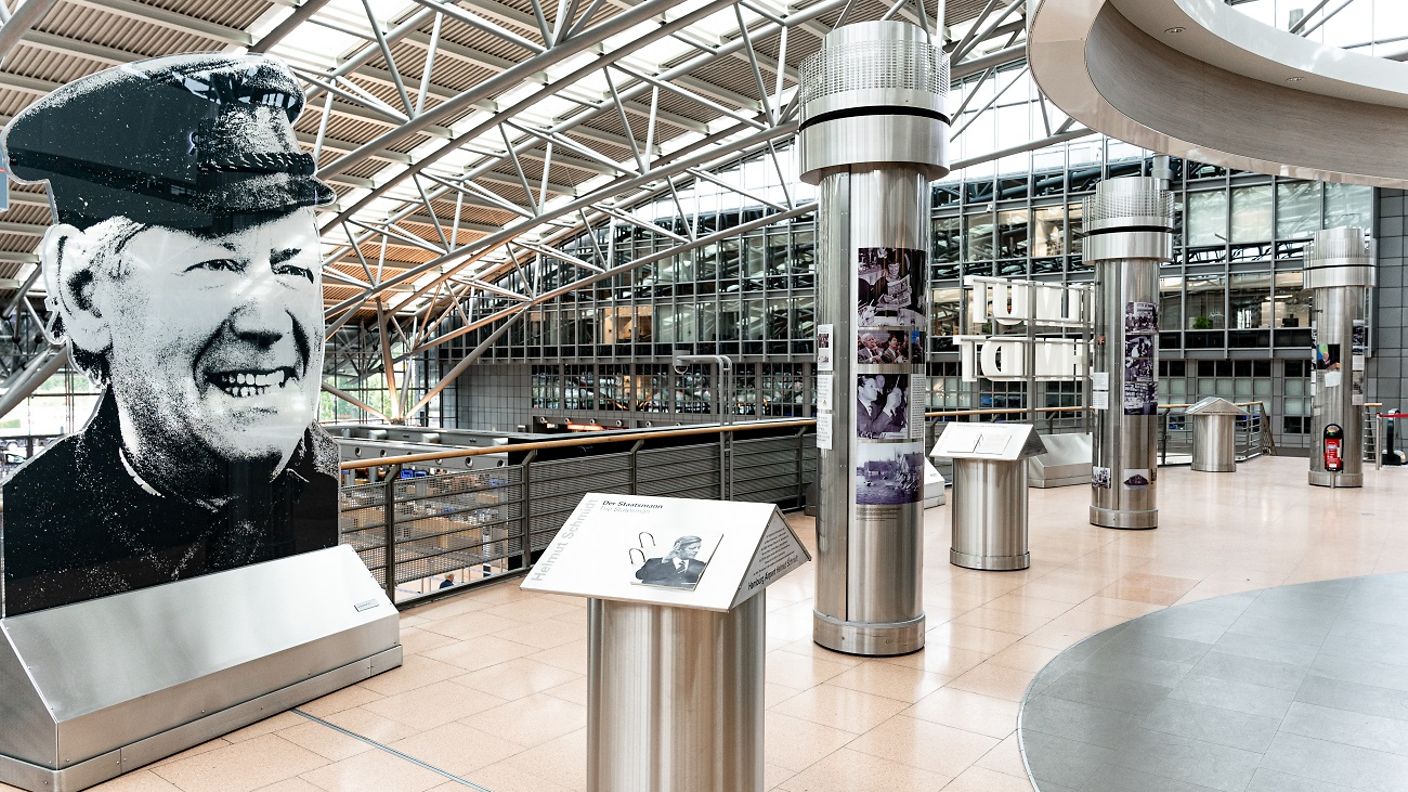Tip
An exhibition in Terminal 2 informs visitors about the life and work of Helmut Schmidt.
Hamburg Airport was established on 10 January 1911. This makes it one of the world’s oldest commercial airports and the oldest international airport in Germany. What makes this so special is that the airport is still at its original location. Hamburg Airport, originally built on the outskirts of the city, is today the fifth largest airport in Germany. Since its beginnings the airport has celebrated many milestones of international air travel.
The airport in the Free and Hanseatic City of Hamburg is proud of its extended name, honouring one of Hamburg’s greatest 20th century sons. Who was Helmut Schmidt, this “man of the century”? He was born here in 1918 and grew to adulthood during the Nazi regime. Decades later, as a Federal Chancellor driven by deep convictions, he campaigned for European cooperation.

An exhibition in Terminal 2 informs visitors about the life and work of Helmut Schmidt.Tip
Here is a brief summary: